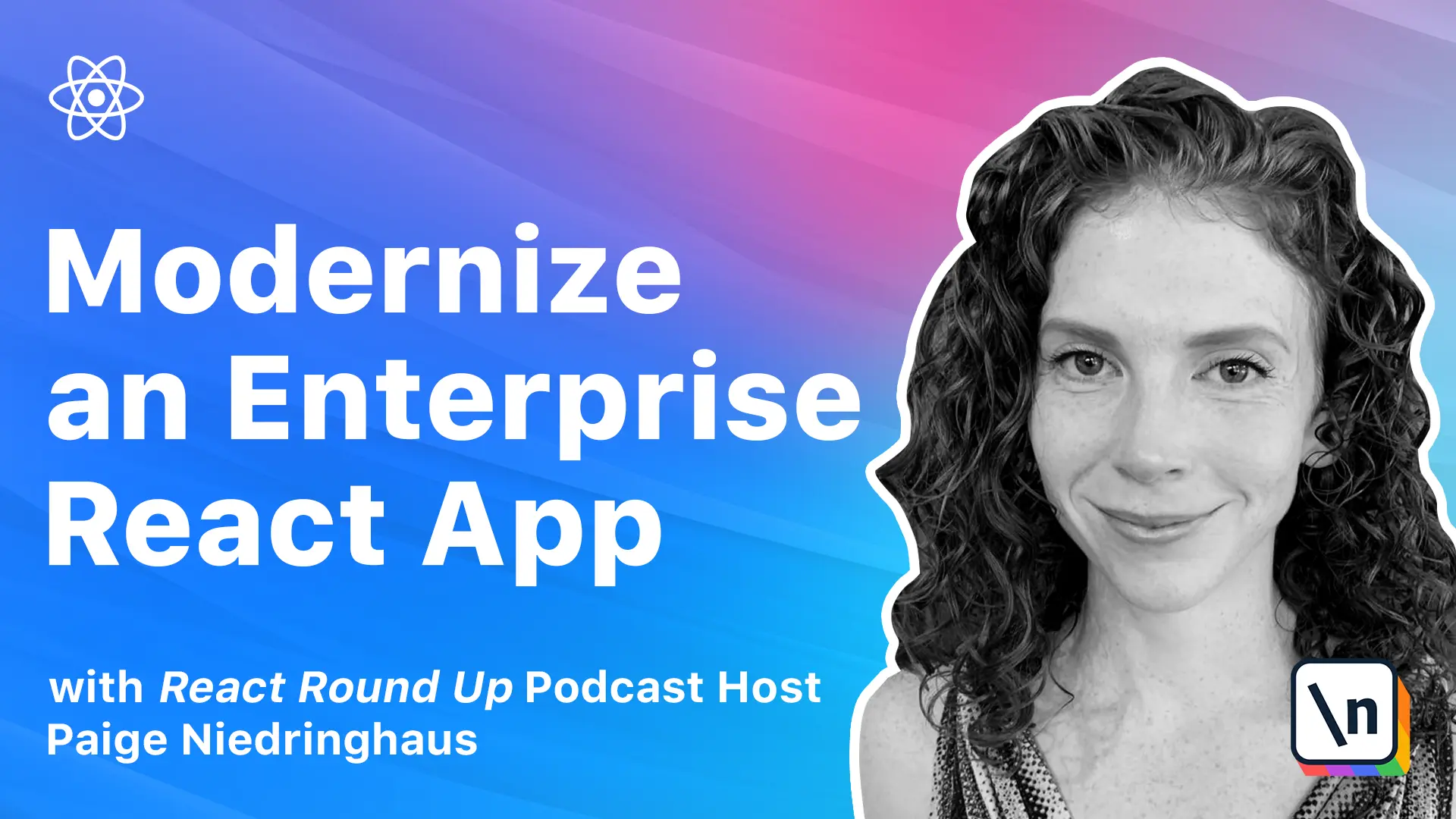Module 2 Introduction
Introduction to Module 2: Upgrading React App Version
This lesson preview is part of the The newline Guide to Modernizing an Enterprise React App course and can be unlocked immediately with a \newline Pro subscription or a single-time purchase. Already have access to this course? Log in here.
Get unlimited access to The newline Guide to Modernizing an Enterprise React App, plus 80+ \newline books, guides and courses with the \newline Pro subscription.

[00:00 - 00:10] We've learned about the benefits React hooks can bring to a project, and we've seen some examples of them at work in the previous module. Now it's time to start applying hooks to our sample app.
[00:11 - 00:29] But before we can add them, we need to upgrade our app to a version of React that actually supports hooks. There's also some foundational JavaScript project configuration that we'll explicitly define in the app so that anyone doing development can do so with confidence and as little setup effort on their part as possible.
[00:30 - 00:49] In this module, we'll upgrade our sample React app hardware handler to use the latest version of React and React scripts. We'll also use Volta and Node engines to define our Node.js and Yarn versions so that no matter which developer pulls the project down locally, everyone will be working with the same dependencies.